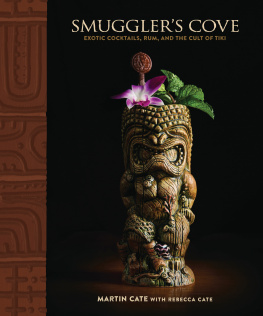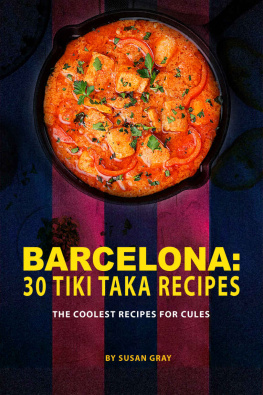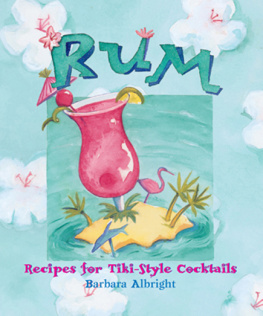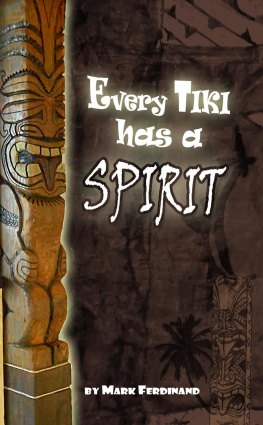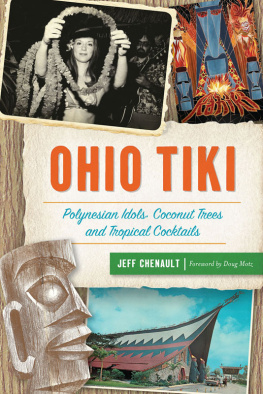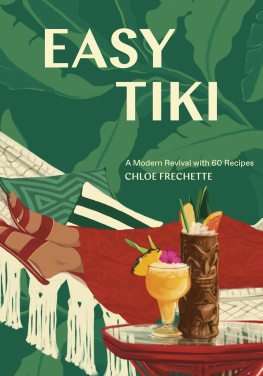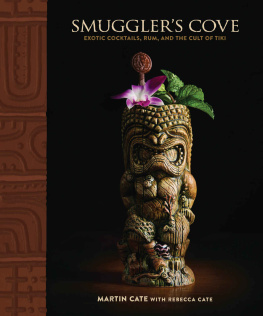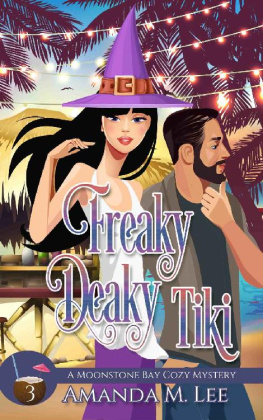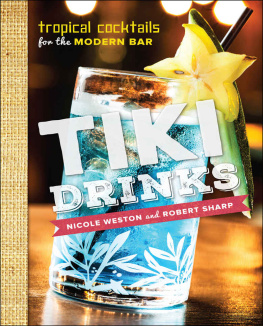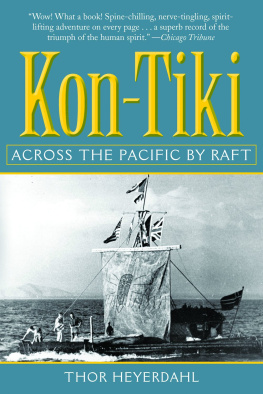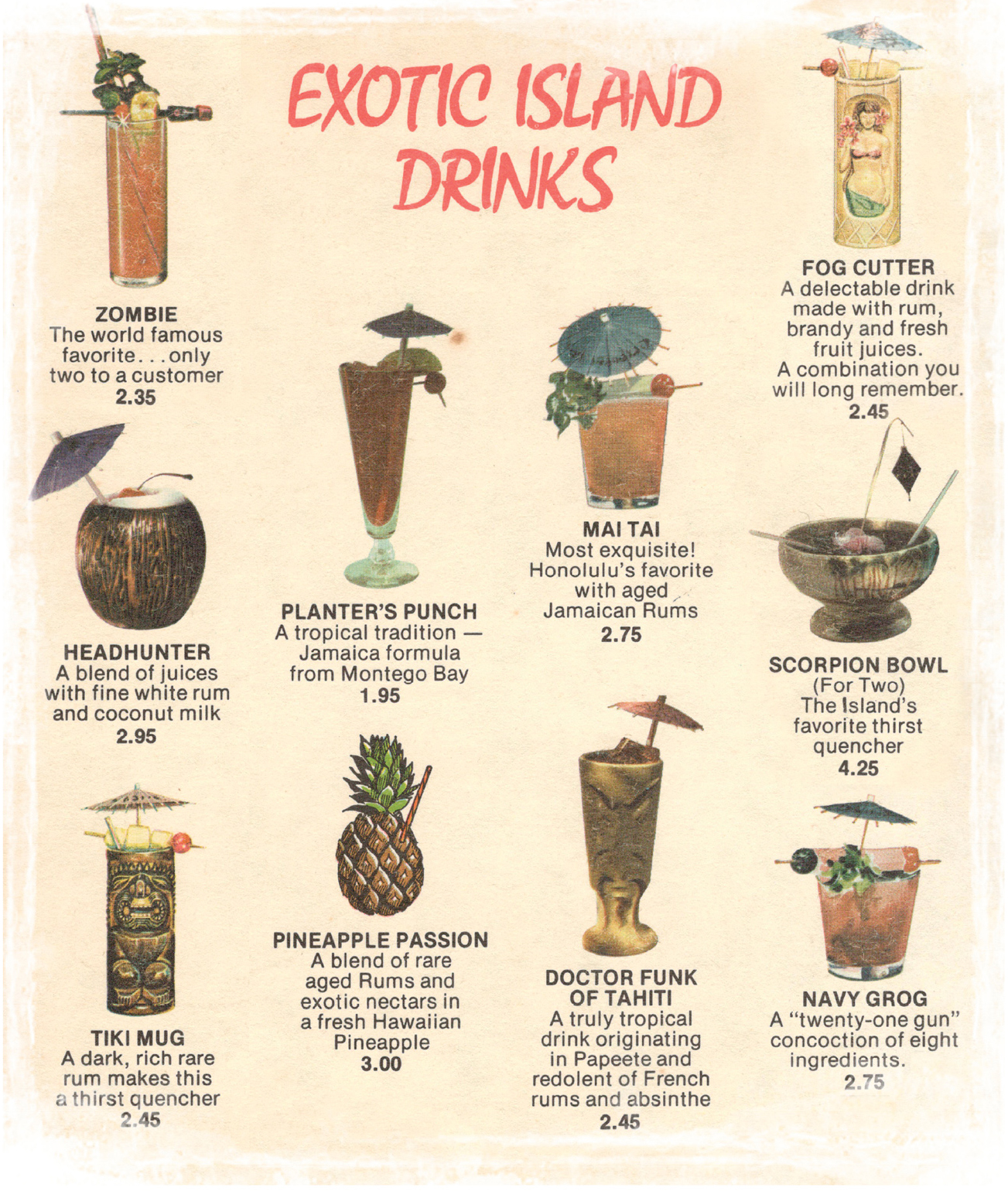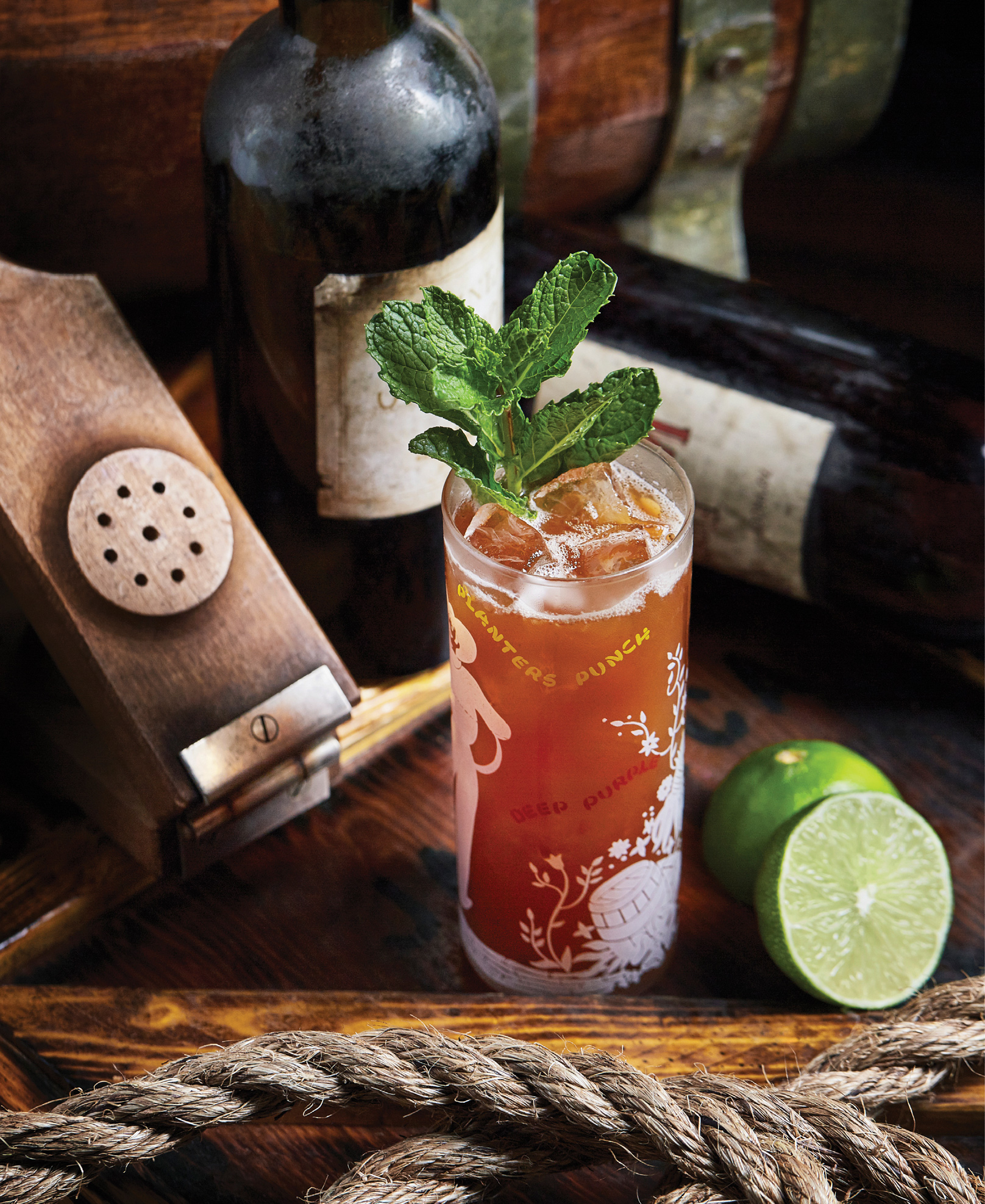From the menu of the Hu Ke Lau restaurant in Bloomfield, Connecticut
As tiki continued his great march across America during the Golden Era, the battlefront was often formed by the most popular drinks of the day.
Its no accident that the cocktails making the most appearances under thatched roofs far and wide came from the minds of Donn and Vic. We celebrate these cocktails as the proud progenitors of many a menu. With the level of secrecy that many of these recipes were accorded, of course, many of these reinterpretations would be just that, like a giant rummy game of telephone, and the spread of altered recipes would ultimately hasten their demise. I am by no means suggesting that these are the only exotic cocktails you need to know, but I include these original recipes here with a place of honor because they are iconic drinks, and all have interesting histories. With these recipes in your repertoire, you can jump behind your (well-stocked) bar (or anyone elses) and have eight great drinks on handand some great stories to share while you mix them.
Planters Punch
This follows the classic rhyming formula, one of sour, two of sweet, three of strong, four of weak (weak being juices, or in our case, ice). We add two of the most popular ingredients in Jamaica (allspice, Angostura bitters) to round it out and give it depth.
ORIGIN Traditional, adapted by Smugglers Cove, 2009
GLASSWARE Collins or highball
1 ounce fresh lime juice
ounce
ounce St. Elizabeth Allspice Dram
3 ounces blended aged rum (Jamaica) 
2 dashes Angostura bitters
GARNISH Mint Sprig
Combine all ingredients in a drink mixer tin with 12 ounces of crushed ice and 4 to 6 agitator cubes. Flash blend and then open pour with gated finish into a Collins or highball glass. Garnish with Jamaican sunshine (ohand a mint sprig).
As punch made its journey across the world with the spice trade, it naturally wound up in the Caribbean. There was a reference to punch in Barbados as early as 1694, giving a recipe of two parts rum, one part water, sugar, lemon (or lime), cinnamon, clove, and nutmeg. Punch in the Caribbean began as something enjoyed by the plantation owners, or planters (hence the name). Over time, there were nearly as many recipes as there were planters to enjoy them, but they all followed the classic formula, complete with a catchy rhyme that can be remembered even after youve had a few. Many people tack on And a touch of spice to make it nice at the end, which can be bitters, nutmeg, or other Caribbean-grown spices. Travel anywhere in the Caribbean, and you will find a planters punch on the menu, often reflective of the juices, spices, and rums of the island. In the 1920s, the planters punch became linked strongly to Jamaica, and to Jamaican black rum, through much assistance by Myerss rum, which formulated and bottled a dark planters punch Rum for use in the drink, and the fact that a planters punch was served at the upscale Myrtle Bank and Tichfield Hotels in Kingston, Jamaica. It was likely here that Donn Beach sampled a planters punch and would use it as the basis for many of his cocktails. To quote Jeff Berry, To create his multi-ingredient, multi-layered Rhum Rhapsodies, he turned the simple planters punch recipe lyric... into the libretto of a grand opera. There was no reason to limit the juice to just lime, the sweet to just sugar, or the strong to just one type of rum. And the exotic cocktail was born. What follows is the recipe youll find at Smugglers Cove, but we encourage you to play with the formula and come up with your own house planters punch(es).
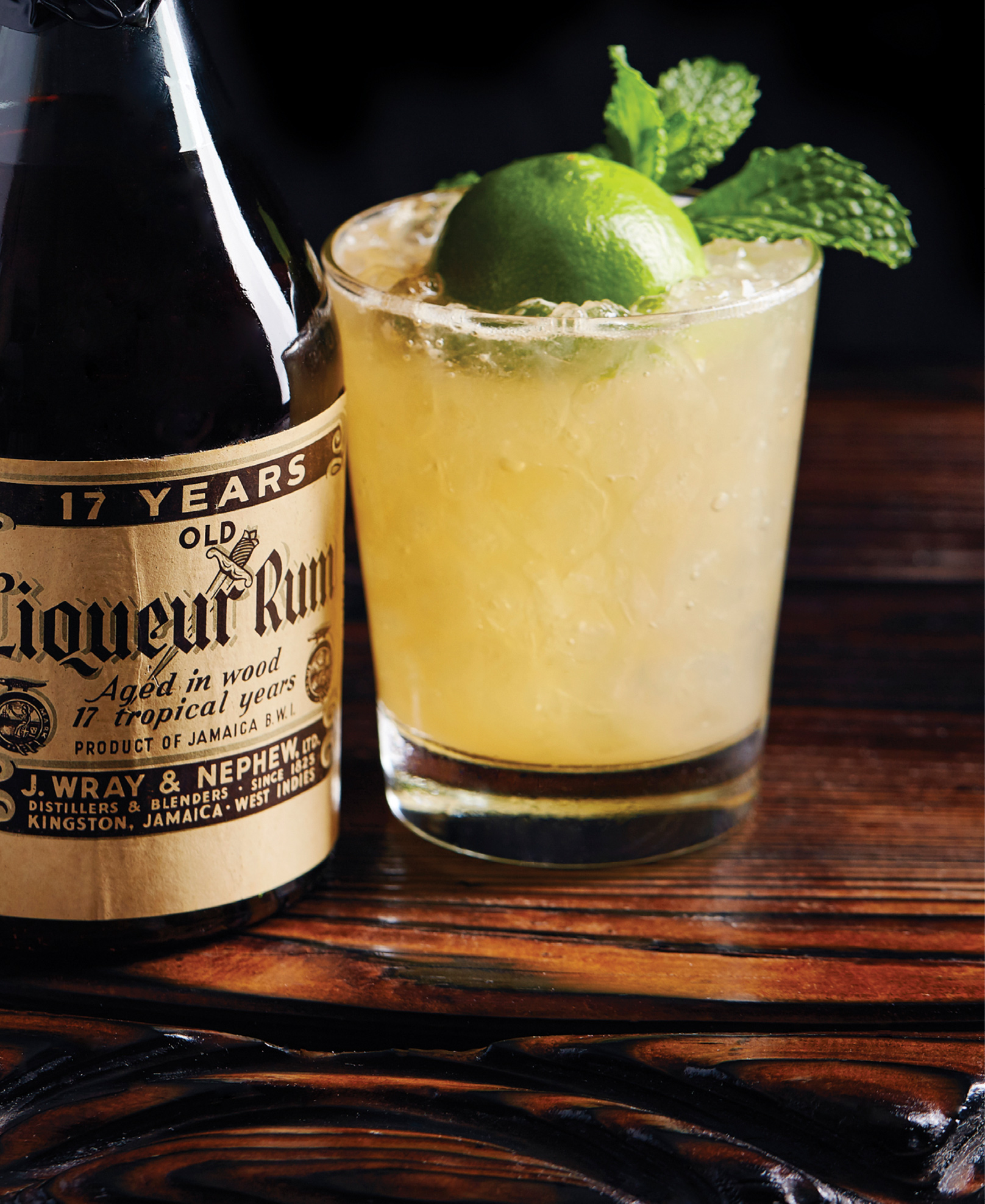
Mai Tai
Within the pantheon of exotic cocktails, one stands above the rest as the most iconic of the era. An elegant and simple concoction, really just a nutty rum margarita, it eschews the conventional structure established by Donn in favor of a more nuanced approach.
ORIGIN Trader Vic, 1944, adapted by Smugglers Cove
GLASSWARE Double old-fashioned glass
ounce fresh lime juice
ounce
ounce
ounce Pierre Ferrand dry curaao
2 ounces 
GARNISH Spent lime shell and mint sprig
Combine all ingredients with 12 ounces of crushed ice and a few cubes in a cocktail shaker. Shake until a frost forms on the shaker and pour the entire contents into a double old-fashioned glass. Garnish with a spent lime shell and mint sprig.
A few notes about the preparation As I was taught as a bartender at Trader Vics, the traditional lime juicer used for the Mai Tai was a Sunkist hand squeezer. You can still find vintage ones on eBay. The lime half is pinched (not turned inside out as with a modern hand juicer) to juice and you then rest the spent half on the bar while you finish the drink. The lime half should not be shaken with the drink as it makes the drink too bitter and doesnt leave you able to rest the shell on top to serve it. The spent shell should rest like a dome on top of the drink, with a mint garnish by its sidetwo aromatic components that are key to the taste of the drink. As the Trader said, it should look like a little tropical island with a palm tree on it. Its also interesting to note that at no point did the Trader ever add a float of rum to the Mai Tai. The float caught on as the Mai Tai traveled and (d)evolved. What I did learn while tending bar at Vics was that years later, an old Trader Vics regular in the Bay Area enjoyed his Mai Tai with a float of overproof Demerara rum. Preparing the Mai Tai this way became known as Old Way. Not because it was the original recipe, but because the patron was old!
Just a handful of ingredients in small amounts act as the perfect foil to the full-bodied and complex Jamaican rum they were chosen to support. It became wildly popular, found its way to menus across the world, and ultimately became a kind of shorthand for exotic cocktails themselves.
If the Mai Tai had simply entered into the toolkit of classics that all bartenders know, and cemented its rightful place as one of Americas greatest liquid achievements, the story would have a happy ending. But thats not what happened. What did happen is that the Mai Tai fell further and farther than any drink in cocktail history, becoming the most bastardized drink of all time. What most people think of as a Mai Tai today has in fact nothing to do with the original cocktail. While Mai Tai may translate to the best in Tahitian, in most bars around the world, it translates to a bunch of rum, whatever juices are in the rail in front of you, more rum on top, and an umbrella. In a standard bar today, when you order a Manhattan, you will likely get some bourbon instead of rye, some old spoiled vermouth, and they will forget the bitters and shake the drink. But you will still be served something at least resembling a Manhattan. When you order a Mai Tai, you are likely to be served a drink with exactly zero of its original ingredients. In fact, the Alcohol and Tobacco Tax and Trade Bureau (TTB) has a class of Recognized Cocktails, which they define as Mixed drink that has gained trade and consumer recognition, containing one or more class(es) and/or type(s) of distilled spirits with flavoring and/or coloring materials. Within that class they have several types, including Manhattans, martinis, daiquiris, Tom Collinses, etc. The general definition of most of these is fairly accurate. For example, the margarita is defined as Tequila, triple sec, and lime or lemon juice or oil or natural lime or lemon flavor. However, the Mai Tai is defined as Rum and citrus juices, oils or natural citrus flavors. Vague enough to be meaningless.

